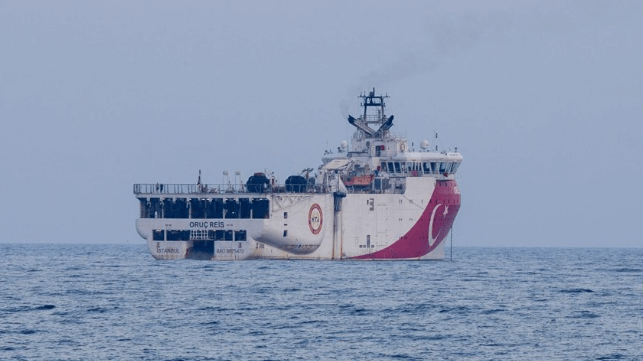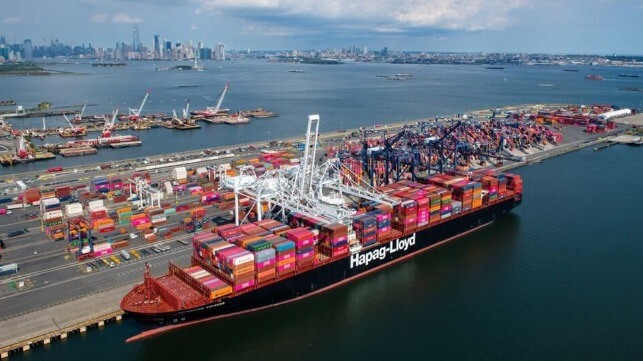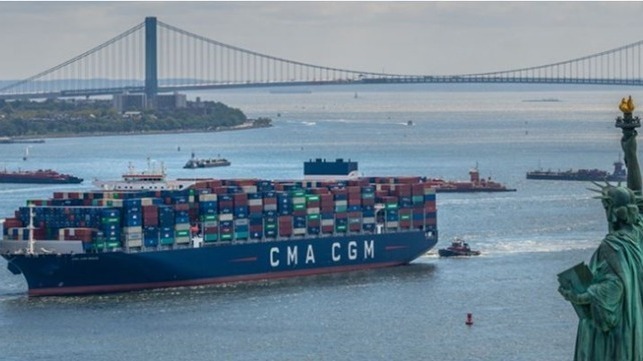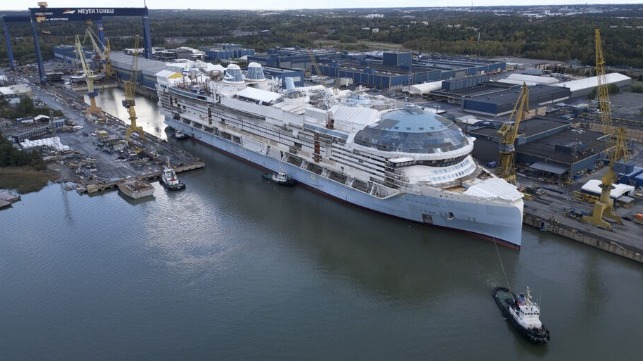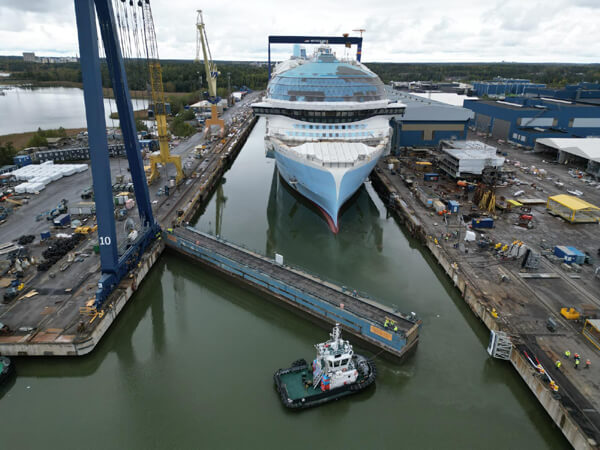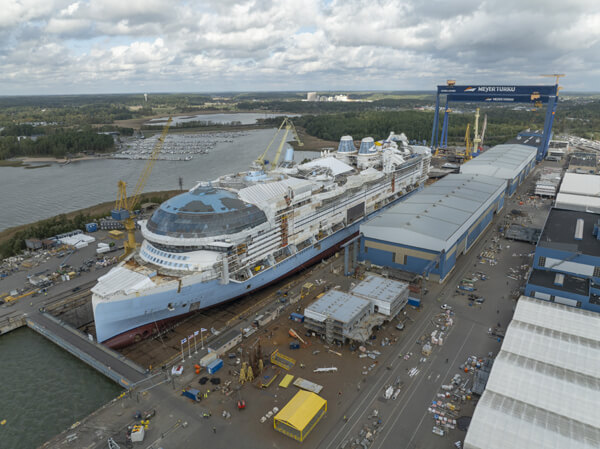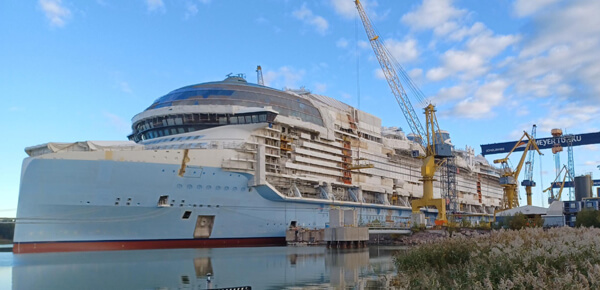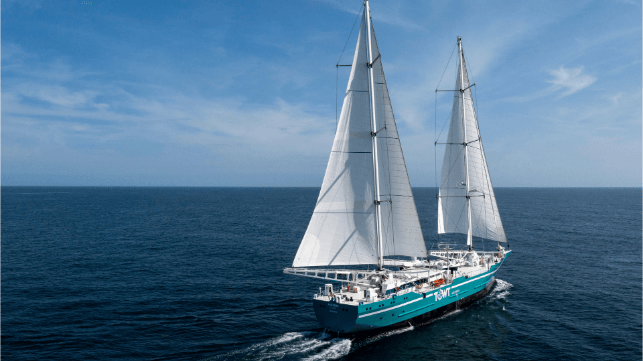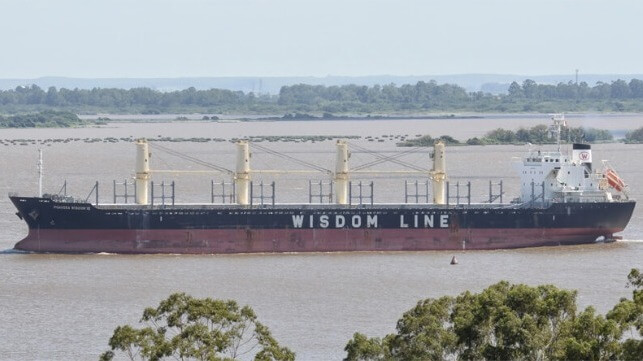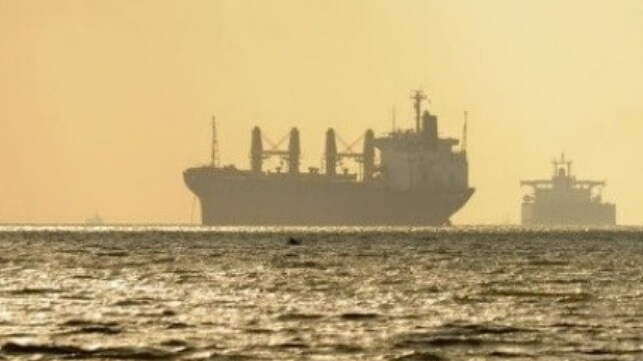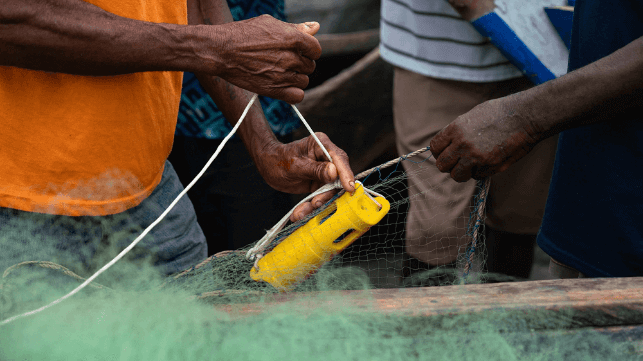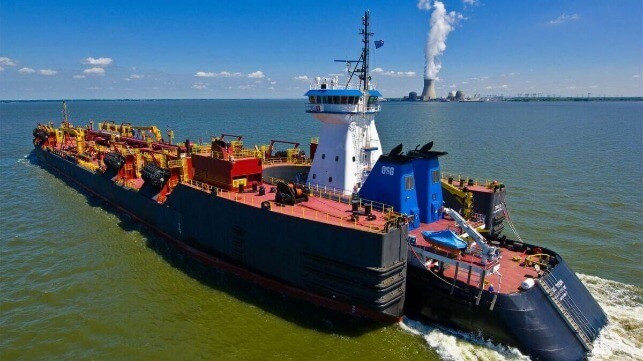[By Daniel Cressey]
Doing science at sea is expensive.
A billion dollars might not be enough to buy a state-of-the-art vessel. Actually running a research ship can easily cost tens of thousands of dollars a day or more, before factoring in submersible trips to the depths or helicopter flights to remote ice floes.
These costs limit the number of hours researchers can spend at sea, and where they can go to gather data on fisheries, climate change, weather and a host of other issues with trillion-dollar consequences. This leaves data on much of the ocean patchy, especially in less wealthy parts of the world.
So scientists are increasingly looking at cheaper options for getting essential and fundamental information including temperature, salinity and depth: so-called “vessels of opportunity”. By piggybacking their work on ships that are already plying the ocean, they can fill some of the huge existing gaps in marine data at a fraction of the cost of hiring a research vessel.
Cold, far away and very, very expensive
One of the most difficult places to work is Antarctica.
Research vessels must first navigate the Southern Ocean’s complex politics and permit systems before they can even hope to navigate its icy waters.
So when one team wanted to hunt for colossal squid in the far south, they found a cheaper option: cruise ships that carry tourists to Antarctica in increasing numbers.
“Research vessels are about $100,000 a day, sometimes it can be like $22 a second to operate. And it takes so much coordination to just get all the partners involved … to grant this vessel permission,” says Myrah Graham, a marine scientist at Memorial University of Newfoundland in Canada.
“But the tourism boats already have permission, and they’re already going there.” As well as saving on costs, boarding cruise ships can be greener – Graham’s team estimate that avoiding using their own vessel saved about 417 kilos of CO2 per researcher involved per day.
Cruise ships are not without their difficulties. Researchers have no control over where they go, what times they can drop equipment into the sea, and they must shift equipment around guests getting on and off. While those hunting huge squid may want to target little-studied dark ocean areas, tourists are understandably keener on shores that teem with penguins.
But Graham says her trip was “definitely a success” – the team made 36 camera deployments in a little-studied region and even captured footage of what may be a colossal squid. If true, this would be the first footage of the animal in its natural habitat.
“But also we’re just seeing these areas of the seafloor for the first time,” she says.
“Especially with climate change changing things at the poles four times faster [than in other regions], having this baseline knowledge of what’s there right now will allow us to potentially in the future monitor and see what changes are occurring on the seafloor.”
On the highways of the seas
While there are only around 100 ocean-going research vessels and a few hundred cruise ships, there are over 50,000 commercial vessels at sea.
One is the CMV Oleander. Every week the freighter travels between New Jersey on the east coast of the United States and Bermuda. Since 1992 it has collected data on the Gulf Stream with every journey.
Ships have been gathering weather data – what happens above the surface – for many years, but Oleander does something far rarer. It was built with a sensor called an ‘Acoustic Doppler Current Profiler’ fitted to it, allowing it to measure currents – what is happening below the surface.
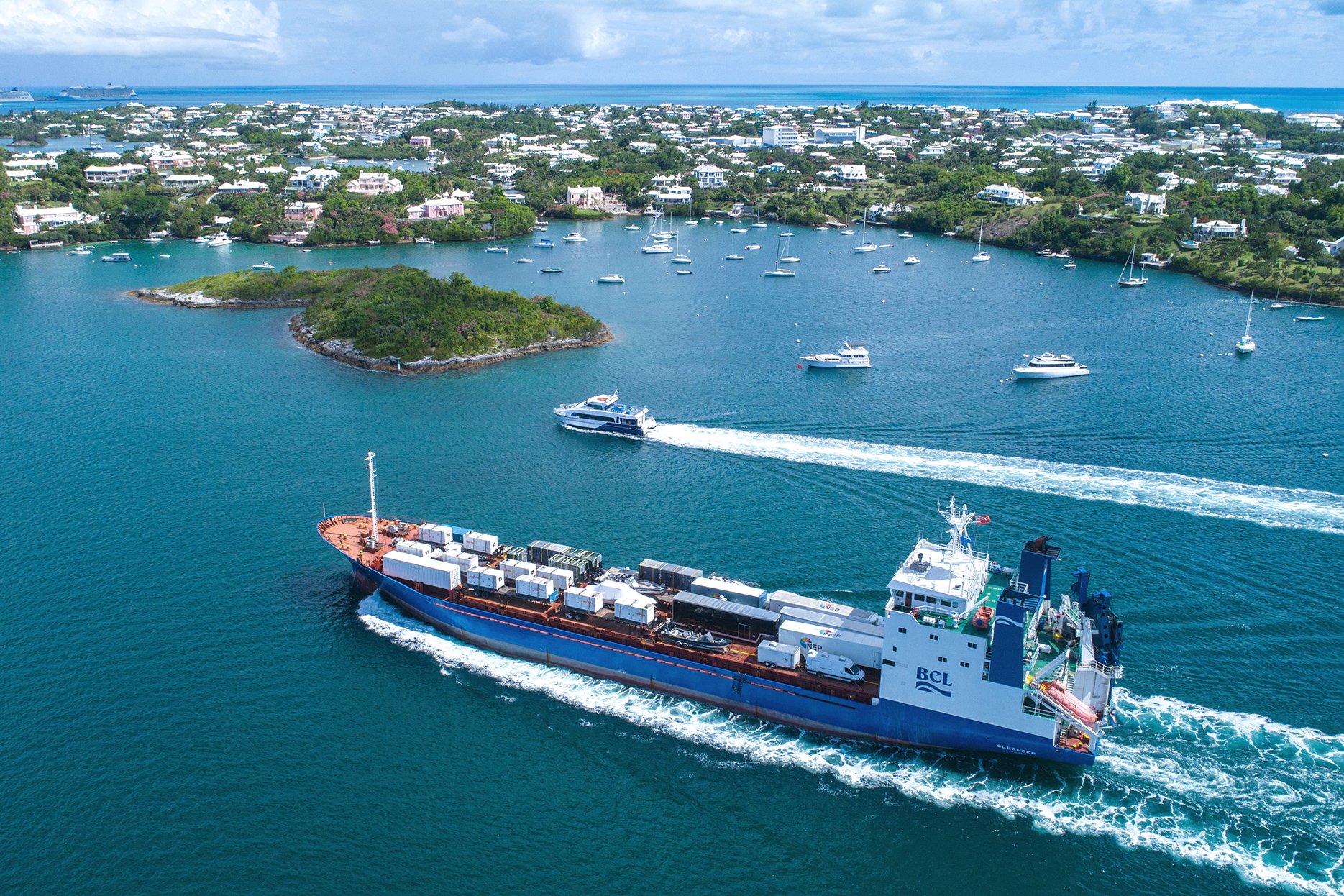
Since 1992, the freighter Oleander has collected data on the Gulf Stream every week as it travels between New Jersey and Bermuda. Commercial ships make repeat visits to the same ocean locations – a luxury research vessels often cannot afford (Image: Oceanography Magazine, CC BY)
Research vessel time is so precious that repeat visits to locations may be rare. The Oleander project offers something different and valuable: the ability to gather data on the same patch of sea over and over.
“These ships go back and forth and back and forth and back and forth on the same line. They revisit the same ocean over and over and over again. So you start to build up a database and inventory catalogue of the various states that the ocean can take along that line,” says Tom Rossby, a retired University of Rhode Island professor who was instrumental in instrumenting the Oleander.
Some of those involved in the Oleander work are now steering Science Research on Commercial Ships (Science RoCS), one of several programmes around the world looking to increase the opportunistic use of ships by researchers. Science RoCS wants to build links between the shipping industry and science communities, linking up scientists with instruments and people with ships, enabling repeated measurements on a vast scale in areas rarely visited by research ships.
“There are so many other instruments now that could go on these vessels, including instruments that measure the partial pressure of carbon dioxide. [That’s] really important for understanding what’s happening with the carbon system and the ocean and the atmosphere,” says Alison Macdonald, an oceanographer at the Woods Hole Oceanographic Institution in the US.
Go fish (for science)
While there are tens of thousands of merchant vessels plying the ocean, there are millions of fishing boats.
As well as data gathered in the course of fishing – such as details of what is caught and where – these boats are increasingly being enlisted to measure things specifically for scientists. In the United States, more than 100 boats that work off the coast of New England have been rigged to measure temperature and oxygen levels via sensors attached to lobster pots. New Zealand has gone even further. The Te Tiro Moana (Eyes on the Ocean in M?ori) programme now involves 200 vessels, over a third of the country’s fishing fleet.
Cooper Van Vranken is founder and CEO of Ocean Data Network which leads the Fishing Vessel Ocean Observing Network (FVON). He works to match existing sensors with fishing boats, managing and distributing the data generated. “What’s unique about fishing vessels is the opportunity to collect that subsurface data because the traps are already going down. It turns out we have way more subsurface data out in the open ocean than we do in close to shore … where the fishing takes place,” he says.
Cooper’s dream is to create a vastly bigger, globe-spanning network measuring temperature, salinity and other important ocean information, under the banner of the FVON. In a recent research paper, he and others wrote that “the global fishing industry represents a vast opportunity to create a paradigm shift in how ocean data are collected.”
The past year has been a busy one. FVON joined the umbrella body for ocean data gathering, the Global Ocean Observing System, and earned a mention in a white paper for the UN on the need to expand ocean observing.
Cooper told Dialogue Earth that there were probably 2 million fishing vessels around the world that could be harnessed and currently nearing 1,000 were already being utilised for data collection.
“Where we want to be is 10,000 vessels. That would fundamentally change ocean observing and oceanography and coastal resilience,” he says.
Setting sail for science
Fishing boats and freighters travel routes determined by what pays. But some vessels sail where their owners please: private yachts.
Several programmes are now attempting to harness yachts to gather a dizzying variety of ocean information. Yachts for Science is one of them. It has previously put a manta ray researcher on a cruise in the Maldives and helped a scientist studying black coral to work off a super yacht in Indonesian waters.
“If we are to collect all of the data that are needed across the ocean, then we just can’t do that off the fleet of current research vessels,” says Lucy Woodall, who oversees the scientific work of the programme.
The key thing for her organisation is matchmaking between researchers with projects they want to do, and yacht owners who will be in the right place to help them.
Acknowledging the privilege of being able to be on a ship, any ship, is something that is important to Woodall, a marine conservation and policy researcher at the University of Exeter in the United Kingdom.
“That’s a privilege that most scientists who are interested in the marine space don’t have, because either their country doesn’t have a vessel or a platform appropriate, or they are not in an institution where they can easily access it,” she says.
A lot of ocean data is biased towards the waters of Global North countries, or areas they are interested in. Vessels of opportunity could help fill many of these gaps for areas governed by countries that lack well-funded national research ships and universities.
“I’ve personally done research off everything from paddle boards to the most amazing, really kitted-out research ship. Any platform that floats is useful,” says Woodall.
If the hopes of those behind these and other vessels of opportunity programmes are realised, one day research at sea will not be so expensive, because nearly every ship will have the ability to do research.
Daniel Cressey is ocean editor at Dialogue Earth. Based in London, he worked as a journalist for two decades at publications including Nature and Research Professional News before joining Dialogue Earth in 2024. He has degrees in chemistry, history of science and journalism. His areas of interest at Dialogue Earth include fisheries; marine conservation and protected areas; plastic and other marine pollution; climate change and ocean acidification; and ocean governance and justice.
This article appears courtesy of Dialogue Earth and may be found in its original form here.
The opinions expressed herein are the author's and not necessarily those of The Maritime Executive.
